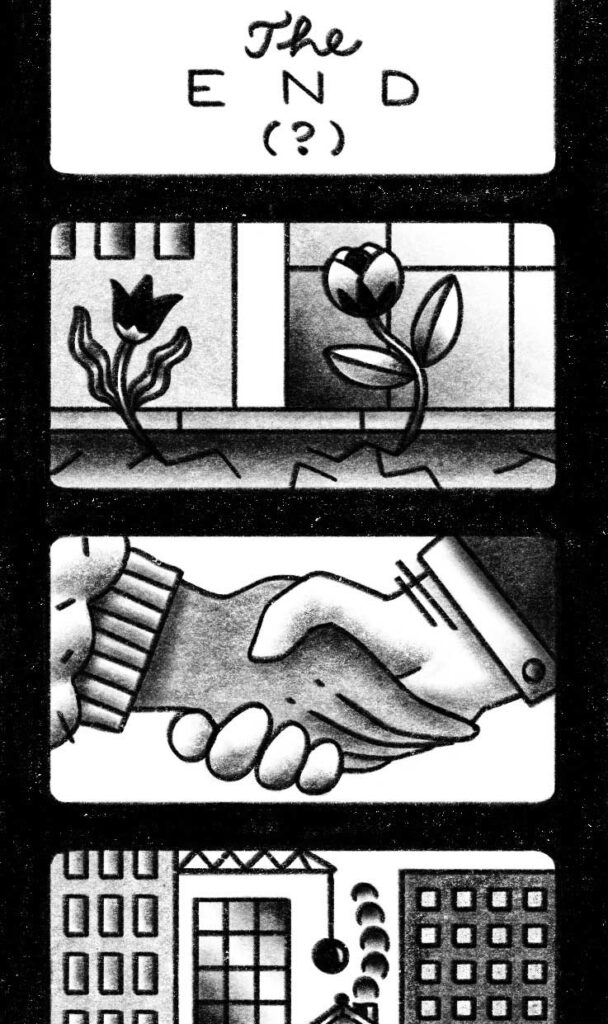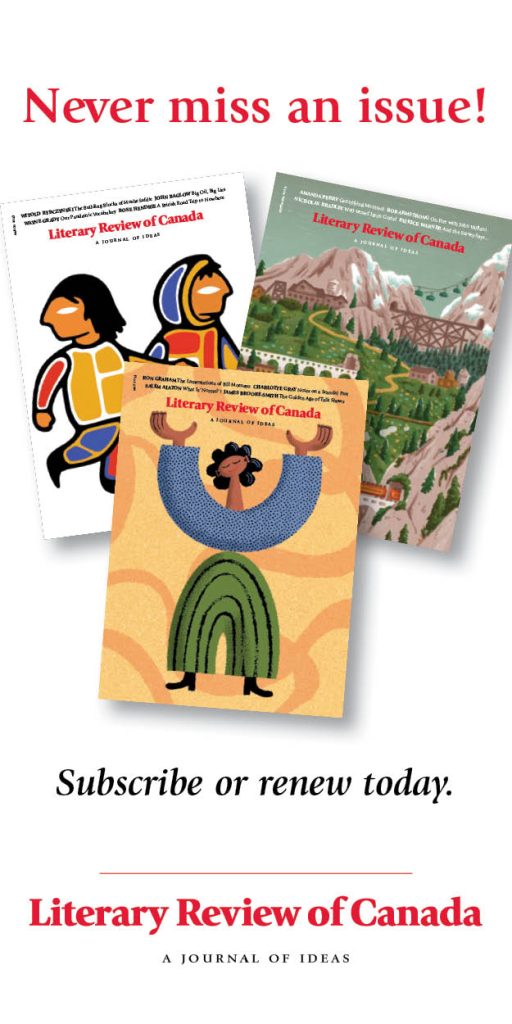When the New Stockholm Film Commission accepts her funding proposal for a documentary, Zeynab Abdi is “flabbergasted” by the outcome. Wanting to explore the effects of gentrification within her former neighbourhood, she explains her connection to the place: “The child of political asylum seekers, she strategically discloses her personal history, namely, the adjacent social housing project into which she was born and raised.” She speaks to the selection committee of “its cultural importance. Its swift dismantling. The political climate that foretells the potential demise of Cipher Falls.” After her pitch, the producers simply shake her hand and ask when she can begin.
This introduction to Zeynab sets up one of the main themes of Valérie Bah’s brilliant and incisive Subterrane : the exposition, economy, and gatekeeping of stories. Before walking into the meeting, the young filmmaker reflects on “what it would mean to sell her project” to an organization devoted to creating “cultural capital meant to reify the state’s legitimacy.” Without knowing exactly how she will proceed, she starts working with characteristic bravado, for “she’s an artist, and will fill in those details along the way.” The details she fills in will prove consequential. Indeed, by the end of the novel we learn that her position on the “precipice” of becoming successful —“calculating the series of daring maneuvers that will reorganize the terrain around her”— is much more literal than metaphorical.
Zeynab’s documentary relies solely on testimony from residents affected by Defense Construction Incorporated’s significant restructuring of Cipher Falls, while the novel itself more broadly details life in New Stockholm. Bah focuses on Black and queer people who dwell, both physically and socially, on the margins of the sprawling North American metropolis (dystopian flourishes suggest a near future that feels all too contemporary). We meet artists and gardeners who grow their own ecosystems despite the slow crumbling of their neighbourhood; many are brought together by a combination of love, desperation, and shared histories.

Producing an urgent, unforgettable film.
Gwendoline Le Cunff
The body takes on a particular importance in Subterrane, as a site of both trauma and self-expression. In the second chapter, the narrative shifts from Zeynab to Phyllida, “a maker and a Maroon,” who accidentally burns her arm while on the job at a greasy burger joint. After sustaining the injury, she asks her friend Tamika, a “diseuse and rootworker” with a tattoo studio, to etch a siren upon her lower chest. The juxtaposition is telling: while Phyllida must treat her blistered forearm to prevent scarring, she chooses to scar herself elsewhere with ink, a wound that must be carefully preserved. Bodies are continually represented as canvases, with characters curating everything from their clothing to their facial expressions in attempts to render themselves “legible” to others.
When we first encounter Mattie, “an artisan and doyenne,” she perceives Zeynab’s past struggles while braiding her hair. “Damaged terrain,” she notes. “The scalp itself is raised and itchy. At her crown lies a map of trials and tribulations.” Mattie’s sensitivity to the physical world is pronounced. She recounts her ablutions in detail: “I bathe every day in essential oils, milk and salt. No deodorant necessary. My natural scent is that of a ripe papaya.” Her commitment to ritual and wellness evokes the essayist Audre Lorde, who wrote, “Caring for myself is not self-indulgence, it is self-preservation, and that is an act of political warfare.” In tending to herself and her verdant apartment, Mattie counters the hegemonic world beyond her doorstep.
Throughout, bodies are intertwined with the larger natural ecosystem. When Phyllida flees Cipher Falls to move in semi-permanently with Frantz, her dealer and lover, she describes his condo as “more garden than home” and sees him as part of the plant world more than of humanity. “The thing about Frantz is that he’s a tree,” she thinks. “He’s a tree that should be content to live tucked away in a corner of the forest, stretching toward the sky indefinitely, in perfect harmony with his environment.” Frantz brings to mind Suzanne Césaire’s anti-capitalistic concept of the homme-plante : “Like a plant, he abandons himself to the rhythm of universal life.” He is all too aware that he does not live within a society that supports his unproductive state of vegetation, and it is with some irony that his desire to buy a piece of land — where he can “grow shrubbery. A couple of friendly trees”— inspires him to apply for a job with DCI. When he is rejected, he angrily rips up seedlings that have sprouted in his greenhouse-like car.
DCI is a cruel, inhumane force — a senseless “they” that remains equally detached from nature and from people. As an activist describes in an interview for Zeynab’s film, “They build this system on the empty spiritual foundation of earth, its extraction. A hole that constantly needs to be filled, always generating other holes, tearing at the fabric of organic life. Perceiving things, only with the aim to destroy them. Creating an ‘up’ so that there can be a ‘down.’ ”
Zeynab traverses this verticality. As her documentary comes together, the role she plays in the unfolding story of Cipher Falls becomes clearer. Both her success and her tragic failings can be attributed to the ambiguity in her position, as she navigates the “underground” communities she cares for and the summit of institutionally recognized art. Even as she sits “physically elevated above the people” at her screening, she still thinks of herself as a “bottom feeder” who “takes the waste, the dirt, the smut of their lives, metabolizes it into something beautiful, ineffable, that feeds the ecosystem.”
In Subterrane, marginal spaces are matrices of both oppression and creativity. Dazzling works of art are made in secrecy and obscurity; characters recede into attics or basements. Under the looming threat of displacement, Cipher Falls is a place of infinite possibility and dire consequence. Its low-income residents resist, in any way they can, the profit-driven powers that shape their lives and built environment.
By giving voice to a diverse, interconnected web of people as they withstand gentrification, Bah has crafted a vivid, emotional, and at times quite funny book that asks, Who can speak? And through what means? Subterrane offers no clear answers, only an urgent and unforgettable depiction of a community whose “beauty and brilliance will emerge as sediment, embedded in every gritty corner” of a city whose economic motivators are doing their best to suppress it.
Bronwyn Averett is a writer and translator in Montreal. She holds a doctorate from Emory University in Atlanta.

